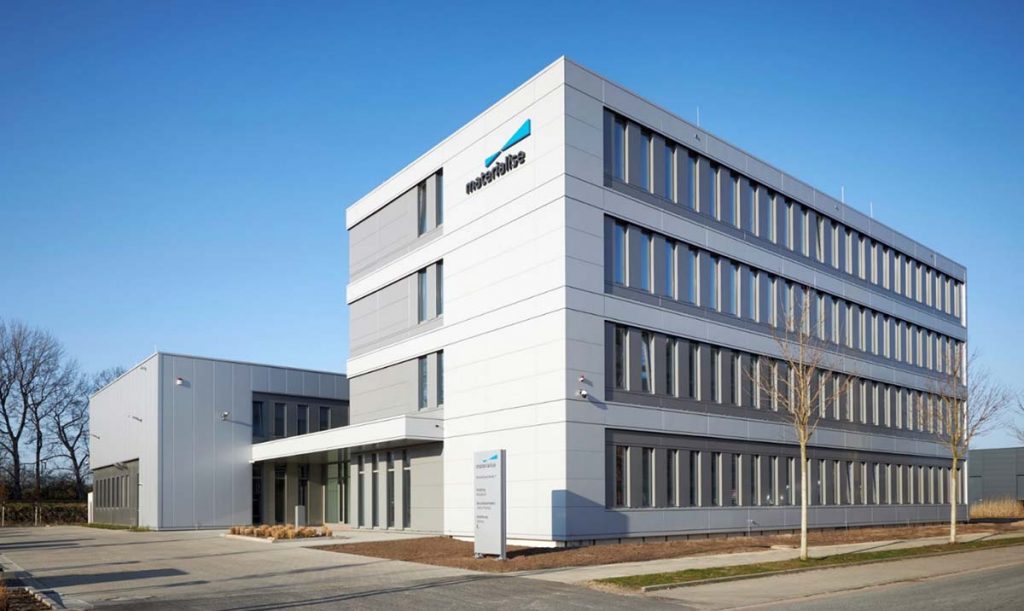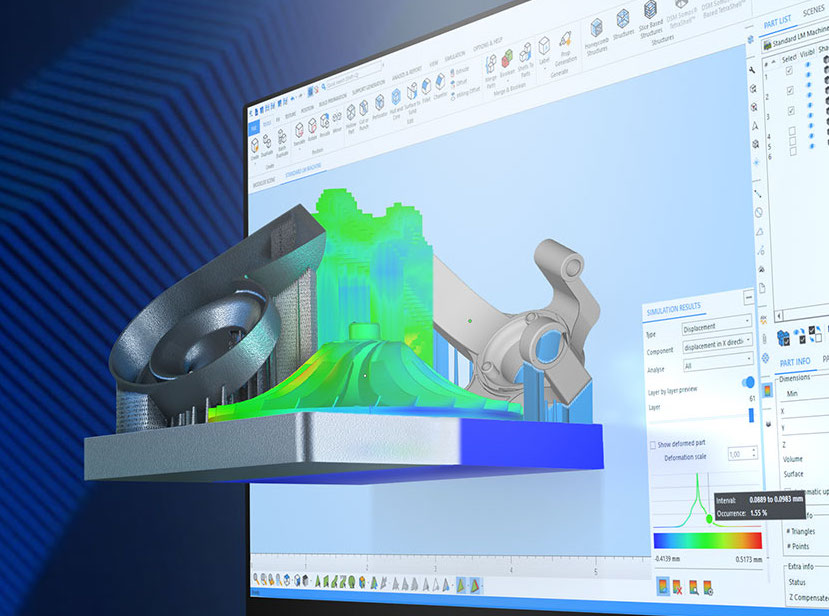Belgian software and 3D printing service provider Materialise (MTLS) has generated record-breaking revenue for the second quarter in a row.
Materialise’s financials show that in Q4 2021 it brought in €57 million, 26% more than the €45 million it reported in Q4 2020, and a 10% rise on the previous record-setting figures it posted in Q3 2021. According to the firm’s CEO Fried Vancraen, this growth was driven by a strong showing from its Medical and Manufacturing divisions, the latter of which got “back on track,” and even surpassed pre-COVID income levels.
“Manufacturing had the highest growth numbers of all our segments, despite production limitations in civil aerospace,” explained Vancraen on Materialise’s earnings call. “But the key driver in this recovery is a segment of business systems where we focus a lot on healthcare equipment. There we have seen a structural increase in the use of additive manufacturing for small-part, series production.”

Materialise’s Q4 2021 financials
Of Materialise’s core Software, Medical and Manufacturing divisions, it was the latter that generated the most income during Q4 2021, bringing in €24 million, or 42% of its overall revenue. On the firm’s earnings call, Vancraen said this was down to a diversification of its client base away from the still-beleaguered automotive and aerospace sectors, the recovery of which could yet yield further growth in future.
Materialise’s second best-performing segment was Medical, which brought in €21 million in Q4 2021, a welcome 24% increase on the €17 million it reported in Q4 2020, after a period in which it had been flat against Q4 2019. During the quarter, the division’s sales benefited from the growing number of users harnessing the VR capabilities of Mimics, and hospitals adopting 3D printed maxillofacial guides.
By contrast, the company’s Software arm generated €12 million in Q4 2021, and while this is 19% more than the €10 million it reported in Q4 2020, it’s still flat against the pre-COVID period of Q4 2019. Despite this, on Materialise’s call, Vancraen focused on the division’s “strong license sales performance” during the quarter, as well as its EBITDA, which rose from 38% to 45% between Q4 2020 and 2021.
On the wider profitability front, the firm’s overall adjusted EBITDA also rose from €7 million to €10 million over the same period, while its gross profit jumped from €26 million to €33 million, reflecting the realization of efficiency gains within its production workflow, and the growing influence of both software and service revenue within its sales mix.
The above figures don’t include any revenue generated by Materialise’s Link3D business either, which brought in €2.1 million in FY 2021 after its acquisition late in the year. Although Link3D didn’t enjoy the same profitability as the rest of Materialise’s portfolio during Q4, with a -€4.3 million EBITDA, Vancraen maintained on the firm’s call that he expects this trend to turn around following its further integration.
| Revenue (€) | Q4 2020 | Q4 2021 | Difference (%) | Q4 2019 | Q4 2021 | Difference (%) |
| Software | 10m | 12m | +19 | 12m | 12m | – |
| Medical | 17m | 21m | +20 | 17m | 21m | +24 |
| Manufacturing | 18m | 24m | +35 | 21m | 24m | +14 |
| Total | 45m | 57m | +26 | 51m | 57m | +12 |
Investing in continued growth
On a year-on-year basis, Materialise saw growth in all three of its core segments in Q4, reflecting its continued investment in expanding its product portfolio. For instance, the company’s aerospace demand may remain low compared to pre-pandemic levels, but its decision to set up a ‘one-stop’ aircraft part shop alongside Proponent, will no doubt have boosted its Manufacturing earnings.
Similarly, Materialise continued to improve the functionality of its popular Magics software during the period, announcing the integration of Siemens’ Parasolid program in December 2021. Due for launch this year, the update is set to allow users to switch seamlessly between CAD and mesh workflows while continuing to iterate upon their designs, without ever having to leave the app, raising their productivity.
Since the turn of 2022, the firm has gone on to develop a real-time error detection platform with Sigma Labs too, and according to Vancraen, despite raising its R&D expenditure by 6% to €29 million in Q4 2021, it has no plans to slow this spending down anytime soon.
“We have the ambition to significantly increase our spending in 2022, especially in R&D and sales and marketing, with a view to accelerating the development of our new-growth businesses,” said Vancraen on the earnings call. “This includes our software cloud platform, the newly-acquired Link3D solutions and our medical and wearable verticals.”
“We believe that the combined growth of our more mature and our newer business lines, (including Link3D) will generate consolidated revenue growth in 2022.”

Unaffected by crisis in Ukraine?
Like many of his 3D printing contemporaries, Vancraen took the opportunity to voice his support for the Ukrainian people during Materialise’s earnings call. However, despite expressing solidarity with the colleagues he has in the country, Vancraen emphasized that they’re now being supported by teams with overlapping skills around the world, thus he doesn’t expect the firm to be too badly affected.
With that in mind, the Materialise CEO added that he anticipates its mature product lines “continuing to grow solidly with a healthy margin” during FY 2022, setting initial guidance for the period of “at least 10% growth,” although he admitted that sanctions on Russia add “a level of complexity” to its outlook, which it would provide an update on alongside its Q2 financials.
“We believe that the impact of the war in Ukraine for our customers and for the continuity of our business will be minimal,” concluded Vancraen, “because many of our people in Ukraine continue to work whenever they can, and colleagues with similar skills and competencies elsewhere in the world are stepping in to assist whenever that is needed.”
“We believe that a war between countries where Materialise has no significant sales will not impact the fundamentals of our global business model.”
To stay up to date with the latest 3D printing news, don’t forget to subscribe to the 3D Printing Industry newsletter or follow us on Twitter or liking our page on Facebook.
For a deeper dive into additive manufacturing, you can now subscribe to our Youtube channel, featuring discussion, debriefs, and shots of 3D printing in-action.
Are you looking for a job in the additive manufacturing industry? Visit 3D Printing Jobs for a selection of roles in the industry.
Featured image shows Materialise’s Metal Competence Center in Bremen, Germany. Photo via Materialise.


